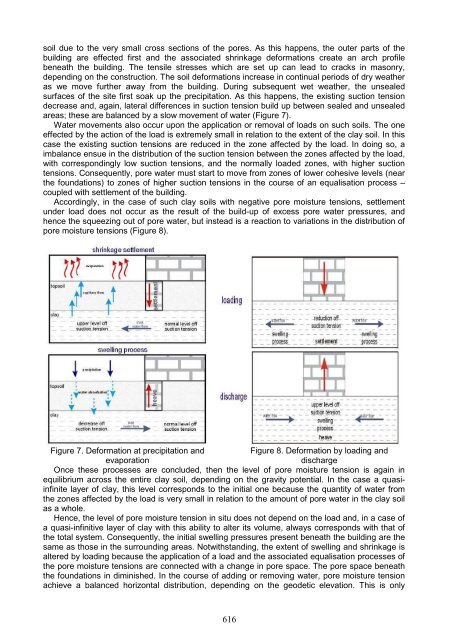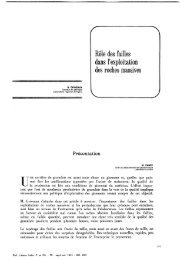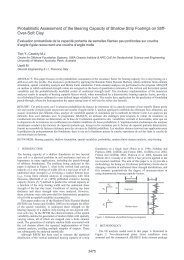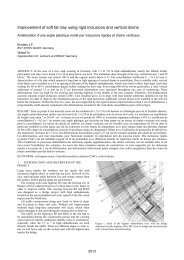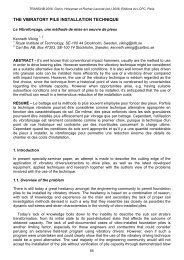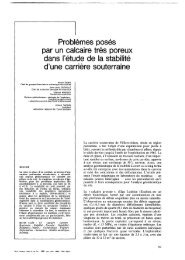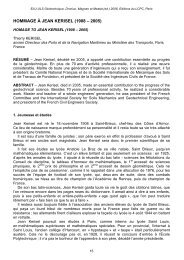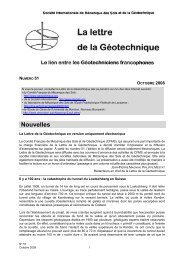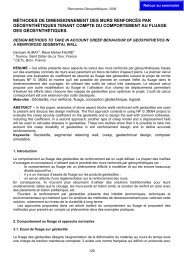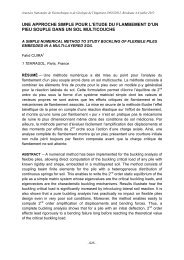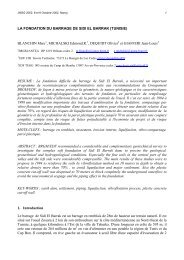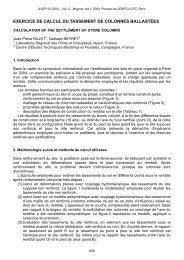Create successful ePaper yourself
Turn your PDF publications into a flip-book with our unique Google optimized e-Paper software.
soil due to the very small cross sections of the pores. As this ha<strong>pp</strong>ens, the outer parts of thebuilding are effected first and the associated shrinkage deformations create an arch profilebeneath the building. The tensile stresses which are set up can lead to cracks in masonry,depending on the construction. The soil deformations increase in continual periods of dry weatheras we move further away from the building. During subsequent wet weather, the unsealedsurfaces of the site first soak up the precipitation. As this ha<strong>pp</strong>ens, the existing suction tensiondecrease and, again, lateral differences in suction tension build up between sealed and unsealedareas; these are balanced by a slow movement of water (Figure 7).Water movements also occur upon the a<strong>pp</strong>lication or removal of loads on such soils. The oneeffected by the action of the load is extremely small in relation to the extent of the clay soil. In thiscase the existing suction tensions are reduced in the zone affected by the load. In doing so, aimbalance ensue in the distribution of the suction tension between the zones affected by the load,with correspondingly low suction tensions, and the normally loaded zones, with higher suctiontensions. Consequently, pore water must start to move from zones of lower cohesive levels (nearthe foundations) to zones of higher suction tensions in the course of an equalisation process –coupled with settlement of the building.Accordingly, in the case of such clay soils with negative pore moisture tensions, settlementunder load does not occur as the result of the build-up of excess pore water pressures, andhence the squeezing out of pore water, but instead is a reaction to variations in the distribution ofpore moisture tensions (Figure 8).Figure 7. Deformation at precipitation andFigure 8. Deformation by loading andevaporationdischargeOnce these processes are concluded, then the level of pore moisture tension is again inequilibrium across the entire clay soil, depending on the gravity potential. In the case a quasiinfinitelayer of clay, this level corresponds to the initial one because the quantity of water fromthe zones affected by the load is very small in relation to the amount of pore water in the clay soilas a whole.Hence, the level of pore moisture tension in situ does not depend on the load and, in a case ofa quasi-infinitive layer of clay with this ability to alter its volume, always corresponds with that ofthe total system. Consequently, the initial swelling pressures present beneath the building are thesame as those in the surrounding areas. Notwithstanding, the extent of swelling and shrinkage isaltered by loading because the a<strong>pp</strong>lication of a load and the associated equalisation processes ofthe pore moisture tensions are connected with a change in pore space. The pore space beneaththe foundations in diminished. In the course of adding or removing water, pore moisture tensionachieve a balanced horizontal distribution, depending on the geodetic elevation. This is only616


